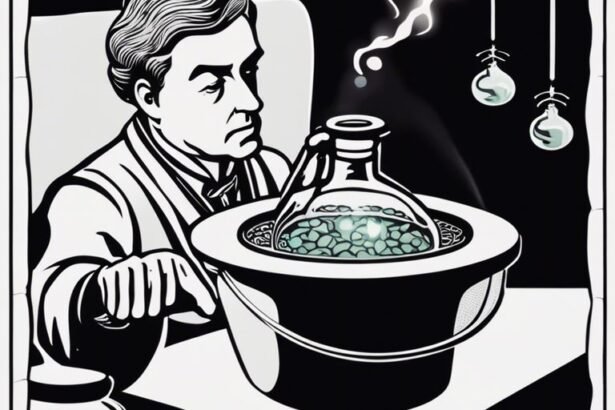Introduction
YouTube has become a lucrative platform for individuals wanting to earn money online without being video creators themselves. By leveraging innovative strategies and understanding the YouTube Partner Program, anyone can start making money on YouTube. From monetizing content to engaging subscribers effectively, there are numerous ways to earn revenue on the platform.
Overview of making money on YouTube
When it comes to making money on YouTube, there are various methods to explore. From generating ad revenue to partnering with brands for influencer marketing, content creators have a multitude of opportunities to monetize their channels. Understanding the platform’s policies and audience preferences is crucial for success.
Utilizing YouTube Partner Program
Understanding the program
The YouTube Partner Program is a key avenue for content creators to earn money on YouTube. By joining this program, creators gain access to additional monetization features such as ad revenue, channel memberships, and Super Chat during live streams. Understanding how the program works is essential for maximizing earnings.
Eligibility criteria
To join the YouTube Partner Program and start earning revenue, creators must meet specific criteria set by YouTube. These criteria typically include reaching a certain number of subscribers, accumulating a minimum watch hours threshold, and adhering to monetization policies. Meeting these requirements is essential to qualify for the program.
Benefits and drawbacks
While the YouTube Partner Program offers significant benefits like ad revenue and channel monetization options, it also comes with its drawbacks. Creators must comply with strict monetization policies, and changes in algorithms can impact revenue streams. Understanding the program’s pros and cons is crucial for sustainable income generation.
Affiliate Marketing on YouTube
Affiliate marketing on YouTube involves partnering with brands to promote their products or services in exchange for a commission on sales generated through your unique affiliate link. This strategy can be lucrative for content creators looking to monetize their channels without creating their own products.
Choosing the right products
When engaging in affiliate marketing on YouTube, it’s essential to select products that align with your channel’s niche and audience demographics. Choosing relevant and high-quality products enhances credibility with your subscribers and increases the likelihood of successful conversions through your affiliate links.
Maximizing affiliate links
To maximize the effectiveness of your affiliate links on YouTube, strategically incorporate them into your content in a genuine and non-intrusive manner. Providing valuable information about the products, including personal experiences or detailed reviews, can encourage viewers to click on your affiliate links and make purchases.
Sponsorship and Brand Deals
How to secure sponsorships
Securing sponsorships on YouTube involves reaching out to brands or being approached by them based on your channel’s content and audience reach. Building a strong and engaged subscriber base, creating high-quality content, and showcasing your influence can attract potential sponsors interested in collaborations.
Negotiating terms
When negotiating sponsorship deals on YouTube, consider factors such as payment terms, deliverables, exclusivity agreements, and brand alignment. Clearly outline expectations from both parties, including content requirements, disclosure policies, and performance metrics to ensure a mutually beneficial partnership.
Key considerations for brand deals
Before entering into brand deals on YouTube, carefully evaluate the reputation, values, and relevance of the potential brand partners. Ensure that the brand’s image aligns with your channel’s ethos and resonates with your audience to maintain authenticity and trust while promoting sponsored content.
Creating and Selling Merchandise
Designing and launching merchandise
Designing and launching merchandise on YouTube involves creating branded products that reflect your channel’s identity and resonate with your followers. Consider factors like product design, quality, pricing, and fulfillment options to offer attractive merchandise that appeals to your audience.
Promoting merchandise to followers
To promote merchandise effectively on YouTube, leverage various strategies such as dedicated merch announcements in videos, utilizing end screens and cards, engaging with your community about new releases, and incorporating merchandise links in video descriptions. Creating exclusive merchandise or limited-time offers can also boost sales and engagement.
Fulfillment and customer service
Overseeing merchandise fulfillment and customer service on YouTube requires efficient order processing, timely shipping, and responsive customer support. Providing a seamless shopping experience, addressing inquiries promptly, and resolving issues professionally are essential for maintaining customer satisfaction and building brand loyalty.
Consulting and Coaching Opportunities
Identifying your expertise is crucial when considering consulting and coaching opportunities on YouTube. Determine your strengths, skills, and areas of knowledge that can provide value to potential clients. Establishing a niche within your expertise will attract clients searching for solutions you can offer.
Attracting clients on YouTube involves showcasing your expertise through informative content. Create videos that demonstrate your knowledge, address common challenges, and offer practical advice. Engage with viewers in the comments section and encourage them to reach out for personalized consulting or coaching services.
Establishing credibility in consulting or coaching requires consistent delivery of valuable content and building trust with your audience. Share success stories, testimonials, and case studies to demonstrate the effectiveness of your services. Engage in collaborations, interviews, and partnerships to enhance your credibility within the industry.
Crowdfunding and Donations
Exploring crowdfunding platforms can provide alternative revenue streams on YouTube. Research platforms like Kickstarter, Patreon, or GoFundMe to determine the best fit for your content and audience. Create compelling campaigns that resonate with your viewers and offer unique incentives to encourage donations and support from your community.
Engaging your audience for donations involves transparent communication about the financial needs of your channel. Clearly explain how donations contribute to improving content quality, expanding reach, or supporting charitable causes. Regularly update your audience on donation progress and express gratitude for their support to foster a sense of community.
Managing donor relationships is essential for long-term sustainability. Establish clear communication channels for donors to provide feedback, ask questions, and stay informed about upcoming projects. Develop personalized strategies to acknowledge and appreciate donors, such as exclusive perks, shoutouts in videos, or participation in special events.
Conclusion
Recap of the strategies discussed highlights the diverse opportunities for earning money on YouTube without creating videos. By leveraging affiliate marketing, sponsorship deals, merchandise sales, consulting, coaching, crowdfunding, and donations, content creators can monetize their channels effectively. Embracing these strategies can lead to financial growth and audience engagement.
Future trends in earning money on YouTube may involve advancements in personalized content experiences, interactive features for viewer engagement, and innovative monetization models. Content creators should stay informed about platform updates, audience preferences, and emerging technologies to adapt their monetization strategies and stay competitive in the evolving digital landscape.





